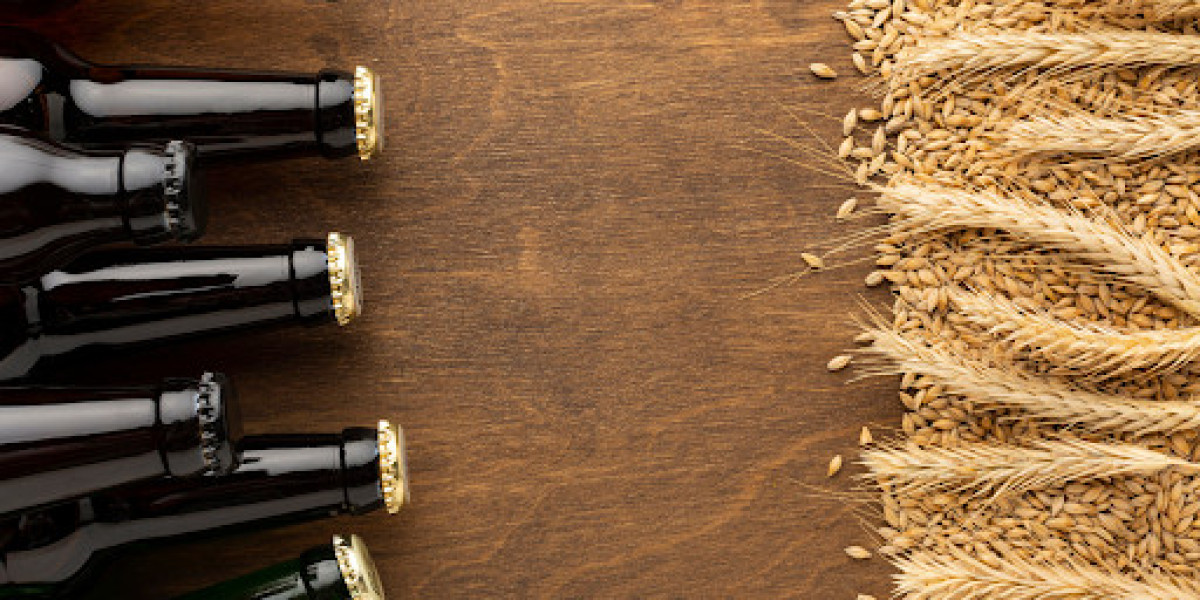Malt beverages have carved out a niche in the beverage world, offering a unique taste and experience compared to traditional beers and other drinks. Often confused with beer, malt beverages are distinct in several ways, both in their production and in their flavour profiles
. Understanding what sets malt beverages apart is essential, whether you're an avid drinker, a beverage entrepreneur, or just curious about the world of drinks. In this blog, we’ll break down what malt beverages are, how they differ from beer, and explore how they stand out in comparison to other beverages.
What is a Malt Beverage?
A malt beverage is a type of drink that is made primarily from malted barley, water, and yeast. While malt beverages can have varying flavours and alcohol content, they all share one common feature: they are made using malted grains that have been soaked, germinated, and dried. The process of malting transforms the starches in the grains into fermentable sugars, which are then fermented by yeast to produce alcohol.
Malt beverages come in various forms, including alcoholic drinks such as malt liquor, flavored malt beverages (FMBs), and non-alcoholic drinks like malt sodas. The production method and ingredients used in these drinks make them distinct from other types of alcoholic beverages, such as beer, cider, or spirits.
How Do Malt Beverages Differ from Beer?
Malt beverages and beer share many similarities. Both are brewed through the fermentation of malted barley (or other grains), and both may contain alcohol. However, there are several key differences between them, particularly in terms of ingredients, production methods, and flavor profiles.
Ingredients and Fermentation Process:
While both malt beverages and beer use malted grains, beer typically involves the addition of hops, which give it its signature bitter flavor and aroma. Hops are used to balance the sweetness of the malt and act as a natural preservative. In contrast, malt beverages—especially flavored ones—often skip the hops and focus more on the sweetness derived from the malt and any added flavorings, such as fruits, herbs, or spices. As a result, malt beverages can be much sweeter and less bitter than traditional beers.Alcohol Content:
Beer typically has an alcohol by volume (ABV) that ranges from 4% to 6%. Malt beverages, on the other hand, can vary widely in ABV. Some malt beverages, particularly malt liquor, have a higher alcohol content (often around 7% to 10% ABV) compared to beer. Flavored malt beverages might also have lower alcohol content, making them more similar to sodas or other sweet drinks.Flavor Profile:
While beer tends to be more complex in flavor, with varying degrees of bitterness, malt beverages are generally sweeter and smoother due to the absence of hops. The inclusion of additional flavorings—such as fruit or spices—further enhances the drink's sweetness and can create a wide variety of taste profiles. Flavored malt beverages, such as Smirnoff Ice or Mike’s Hard Lemonade, are perfect examples of this sweet and fruity flavor that distinguishes them from the more bitter taste of beer.Carbonation:
Both malt beverages and beer are often carbonated, but the level of carbonation can differ. Beer typically has a natural carbonation resulting from fermentation, while some malt beverages are artificially carbonated to enhance their fizzy, soda-like qualities. This gives malt beverages a lighter, more refreshing mouthfeel compared to the often denser carbonation of beer.
Malt Beverages vs. Other Drinks
Beyond beer, malt beverages also stand apart from other drinks, including soft drinks, alcoholic spirits, and wine. Let's look at how they compare to some of these drinks:
Malt Beverages vs. Soft Drinks:
Malt beverages, especially non-alcoholic versions like malt sodas, often resemble soft drinks in appearance and flavor. However, unlike regular sodas, malt beverages are brewed through a fermentation process, which gives them a depth of flavor that sodas lack. While soft drinks contain high amounts of sugar and artificial flavorings, malt sodas typically have a richer, maltier taste and sometimes feature more natural ingredients. Non-alcoholic malt beverages offer a more satisfying alternative to sugary sodas for individuals seeking a beverage with greater body and complexity.Malt Beverages vs. Alcoholic Spirits:
Spirits like vodka, whiskey, and rum are distilled, resulting in a much higher alcohol content than malt beverages. Unlike spirits, which are often consumed straight or mixed into cocktails, malt beverages typically have a lower alcohol by volume (ABV) and are often consumed casually. While spirits provide a more substantial, more intense drinking experience, malt beverages are known for being lighter and more refreshing, appealing to those who prefer a more laid-back drinking experience. The sweet, malty flavors of malt beverages make them a good alternative for those who find the harshness of distilled spirits less appealing.Malt Beverages vs. Wine:
Wine is made from fermented grapes or other fruits, and its flavor comes from the specific type of fruit used, as well as the aging process. On the other hand, malt beverages rely on malted barley and are brewed, not fermented directly from fruits. Wine has a much broader range of complex, earthy flavors that vary with the terroir, while malt beverages generally have a more straightforward, malty sweetness. Additionally, wine typically has a higher alcohol content (around 12% ABV) compared to most malt beverages, which tend to range from 5% to 10% ABV.
Why Choose Malt Beverages?
Malt beverages stand out in the beverage market because they offer a unique combination of flavor, refreshment, and flexibility. They can cater to a variety of tastes—from the sweeter, fruit-flavored options to more potent malt liquors. Here are some reasons to choose malt beverages:
Sweet and Flavorful: With their rich malt base and variety of added flavors, malt beverages provide a sweeter, more indulgent drinking experience compared to the bitterness of beer or the dryness of wine.
Lower Alcohol Content: For those looking for a moderate alcohol intake, malt beverages offer a lower ABV alternative to spirits, making them ideal for casual drinking.
Non-Alcoholic Options: Non-alcoholic malt beverages offer an excellent alternative for those seeking the taste of malt without the effects of alcohol.
Innovative Variations: Malt beverages are continually evolving, with brands introducing new flavors, types, and even hybrid drinks, such as malt-based hard seltzers, to cater to shifting consumer preferences.
Conclusion
Malt beverages are a versatile and unique segment of the beverage industry, offering a wide range of flavors, alcohol content, and drink styles. Whether it’s the rich, malty flavor of malt liquor, the refreshing sweetness of flavored malt beverages, or the nostalgia of malt sodas, these drinks provide an alternative to beer, spirits, and even soft drinks. By understanding what sets malt beverages apart—whether in terms of taste, production process, or market appeal—you can appreciate their unique place in the vast landscape of beverages.








